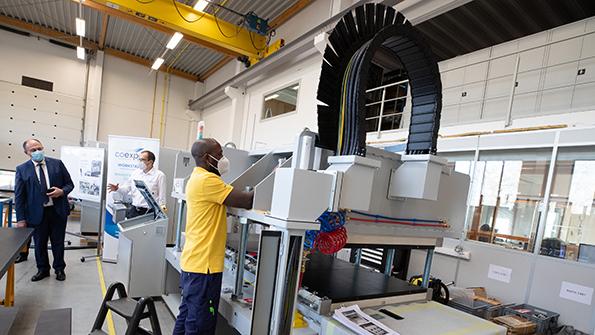Opinion: What’s On Aerospace And Defense Industry’s Mind For 2021?

The aerospace and defense (A&D) industry faces tumultuous change arising from digital disruption, the global pandemic and a changing competitive landscape. As we head into 2021, four key areas will help industry confront these disruptions in the new year.
Cash Rules
The first area is cash management. What we see in the industry is a “tale of two cities.” Commercial and defense businesses have fared differently throughout the COVID-19 pandemic.
As activity contracts and new orders are put on hold, commercial aerospace companies must focus on finding a balanced financial strategy that can help them sustain operations and ride out the effects of COVID-19. But even the until-now more buoyant defense companies are watching the financial picture carefully, and in particular focusing on the liquidity of their supply bases.
In troubled times, cash is always a preoccupation, and the present is no different. Nearly two-thirds of A&D executives (63%) rank liquidity and financing among the top two challenges for their company over the next 6-18 months.
There are two key actions that leaders should take to address the pandemic’s effect on their finances. The first is to set up a “liquidity control tower” that provides a single view of all aspects of liquidity, linking information related to receivables, payables, inventory, risk, taxes and cash flow, through a 360-deg. governance framework. The second is to harness data and analytics to provide programmatic finance management with models that can be updated in near-real time to explore scenarios and develop the dynamic insights that guide optimal actions.
Supply Chain and Smart Manufacturing
Second, COVID-19 has shone an intense light on the resilience of the A&D supply chain. It is more vital than ever to have 100% insight into the availability of critical components and parts to manage risk from suppliers and facilities. Yet, research from Accenture found 69% of A&D executives say they have prioritized anticipating and responding to supply-chain events in order to protect the customer experience. COVID reemphasizes that creating a more resilient, flexible and adaptable supply chain is a “must-do” for the industry.
Reinventing the supply chain with new technology not only increases its resilience; it creates the foundation for next-generation smart, connected and agile capabilities. We’ve heard from executives who overwhelmingly agree emerging technologies like artificial intelligence (AI), internet of things, automation and wearables have accelerated the pace of automation over the past three years.
A Workforce Model for Now and the Future?
The third major issue in the COVID era is the workforce—where the pandemic’s most visible effects have been seen. While remote working is not new to the industry, the scale of the shift required during the pandemic is unprecedented. In fact, 60% of industry executives are making investments for long-term remote work a priority for the next six months.
More than a change in technology and tools, one of the biggest challenges has been the required change in culture. Moving effectively from a hands-on, highly collaborative environment to a distributed workforce that is connected digitally but not co-located remains a work in progress for most companies.
In many ways, COVID-19 has served to accelerate progress toward a more digitally savvy workforce. In particular, the power of humans and machines working together in new ways holds the key to success. It remains challenging, however: 90% of A&D executives cite this human-machine collaboration as a top talent challenge for building and scaling their digital pilots.
Systems Resilience
Finally, every organization has recognized the power of digitalization to achieve resilience in this volatile world. Many have wished they had made greater progress on their digital journeys before COVID-19. Those who had made big strides toward transformation have found it easier to cope with the challenges created by the pandemic.
In short, digitalization is the key enabler of virtually everything A&D businesses will need to achieve. So, whether the question is about being more data-driven, deploying more automation and AI, using the cloud extensively or having a more collaborative culture and the tools to support it—digital is the answer. Yet, our research reveals only 38% of A&D companies have mature cloud practices and tools in place, and only 30% of executives say AI has been adopted across multiple business units within their organizations.
These findings show there is plenty of work to do. But there is growing momentum behind the changes that need to happen. COVID-19 has forced the pace. And it just might be that this extra push will accelerate progress and take the industry in the right direction. Perhaps in 2022, the main topic of conversation will be how far and fast the industry has traveled.
John Schmidt is Accenture’s global aerospace and defense practice leader.
The views expressed are not necessarily those of Aviation Week.
